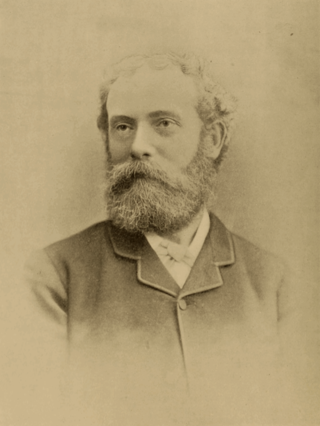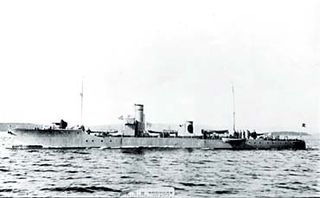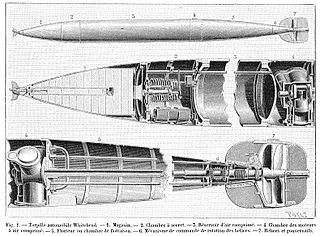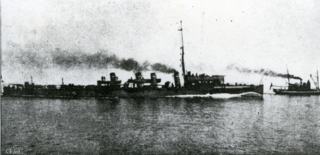
In naval terminology, a destroyer is a fast, maneuverable, long-endurance warship intended to escort larger vessels in a fleet, convoy, or carrier battle group and defend them against a wide range of general threats. They were originally conceived in 1885 by Fernando Villaamil for the Spanish Navy as a defense against torpedo boats, and by the time of the Russo-Japanese War in 1904, these "torpedo boat destroyers" (TBDs) were "large, swift, and powerfully armed torpedo boats designed to destroy other torpedo boats". Although the term "destroyer" had been used interchangeably with "TBD" and "torpedo boat destroyer" by navies since 1892, the term "torpedo boat destroyer" had been generally shortened to simply "destroyer" by nearly all navies by the First World War.

A torpedo boat is a relatively small and fast naval ship designed to carry torpedoes into battle. The first designs were steam-powered craft dedicated to ramming enemy ships with explosive spar torpedoes. Later evolutions launched variants of self-propelled Whitehead torpedoes.

The Oslo-class frigate is a Royal Norwegian Navy frigate design of the 1960s, based on the US Navy Dealey-class destroyer escorts. The forward hull was customized to suit Norwegian sea conditions better and several sub-systems were European built. Ships of the class operated until 2007, when they were replaced by the Fridtjof Nansen class.

The Havock class was a class of torpedo boat destroyer (TBD) of the British Royal Navy. The two ships, Havock and Hornet, built in London in 1893 by Yarrow & Company, were the first TBDs to be completed for the Royal Navy, although the equivalent pair from J.I. Thornycroft, Daring and Decoy, were ordered five days earlier.

Sir John Isaac Thornycroft was an English shipbuilder, the founder of the Thornycroft shipbuilding company and member of the Thornycroft family.

John I. Thornycroft & Company Limited, usually known simply as Thornycroft, was a British shipbuilding firm founded by John Isaac Thornycroft in Chiswick in 1866. It moved to Woolston, Southampton, in 1908, merging in 1966 with Vosper & Company to form one organisation called Vosper Thornycroft. From 2002 to 2010 the company acquired several international and US-based defence and services companies, and changed name to the VT Group. In 2008 VT's UK shipbuilding and support operations were merged with those of BAE Systems to create BVT Surface Fleet. In 2010 remaining parts of the company were absorbed by Babcock International who retained the UK and international operations, but sold the US based operations to the American Jordan Company, who took the name VT Group.

HNoMS Trygg was a torpedo boat of the Royal Norwegian Navy. Her hull was built in Moss and she was finished in Horten, with build number 109. Trygg had two sister ships: HNoMS Snøgg and HNoMS Stegg. Together the three vessels formed the Trygg class of torpedo boats.

The Royal Norwegian Navy Museum is a museum documenting the history of the Royal Norwegian Navy. It is located at the former main naval base of Karljohansvern in Horten. The museum was founded by C.F. Klinck on 24 August 1853. The museum is sometimes regarded as the world's first naval museum, as it was the first collection of naval memorabilia open to the public.

HMS Lightning was a torpedo boat, built by John Thornycroft at Church Wharf in Chiswick for the Royal Navy, which entered service in 1876 and was the first seagoing vessel to be armed with self-propelled Whitehead torpedoes. She was later renamed Torpedo Boat No. 1.

HNoMS Svenner was a Royal Norwegian Navy destroyer during the Second World War. She was built for the Royal Navy as the S-class destroyer HMS Shark but on completion was lent to the Norwegian Armed Forces in exile. Svenner was sunk off Sword, one of the Allied landing zones in Normandy, at dawn on 6 June 1944 while supporting the British Army Normandy landings. It was the only Allied ship to be sunk by the Kriegsmarine during the morning of the invasion.

HNoMS Ula, previously HMS Varne, a British-built U-class submarine, and a member of the third group of that class to be built. She never actually served under the name Varne, being transferred before commissioning to the exiled Royal Norwegian Navy as HNoMS Ula (S300). In 1944 she sank a German U-boat during one of her patrols off Norway. She remained in Norwegian service and was scrapped in 1965.

The Whitehead torpedo was the first self-propelled or "locomotive" torpedo ever developed. It was perfected in 1866 by British engineer Robert Whitehead from a rough design conceived by Giovanni Luppis of the Austro-Hungarian Navy in Fiume. It was driven by a three-cylinder compressed-air engine invented, designed, and made by Peter Brotherhood. Many naval services procured the Whitehead torpedo during the 1870s, including the US Navy. This early torpedo proved itself in combat during the Russo-Turkish War when, on 16 January 1878, the Ottoman ship Intibah was sunk by Russian torpedo boats carrying Whiteheads, though this story has been disputed in one book.

HMS Wanderer (D74/I74) was an Admiralty modified W class destroyer built for the Royal Navy. She was the seventh RN ship to carry the name Wanderer. She was ordered in January 1918 to be built at the Fairfield Shipbuilding and Engineering Company, Govan in Glasgow, being launched in May 1919. She served through World War II where she was jointly credited with five kills on German U-boats, more than any other ship of her class. In December 1941 the community of Sutton Coldfield in Warwickshire officially adopted her. In 1943 she was one of twenty one V&W class destroyers to be converted as Long Range Escorts. She was decommissioned after the war and sold for scrap in 1946.

HMS Viscount was a V-class destroyer of the British Royal Navy that saw service in the final months of World War I and in World War II.

The Uskok class was a class of two motor torpedo boats built for the Royal Yugoslav Navy during the late 1920s. Named Uskok and Četnik, the boats were built by the Thornycroft Company based on their existing class of 17-metre-long (55 ft) Coastal Motor Boats, but were almost 1.5 metres (5 ft) longer. As their main armament they were equipped with cradles that carried two British-designed 456-millimetre (18 in) torpedoes, were fitted with hydrophones, and could carry depth charges instead of torpedoes if used in an anti-submarine role. The boats were lightly-built using mahogany, powered by two petrol engines, but lacked transverse bulkheads within the hull to mitigate leaks.

Albatros was the fourth of six Type 23 torpedo boats built for the German Navy. Completed in 1927, Albatros often served as a flagship of torpedo boat units. The ship made multiple non-intervention patrols during the Spanish Civil War in the late 1930s. After an attack by aircraft of the Spanish Republican Air Force killed German sailors in 1937, she participated in the retaliatory bombardment of Almería.
HMS Vesuvius was an experimental torpedo-armed warship of the British Royal Navy. Built by Pembroke Dockyard in 1873–1874, she was the first purpose-designed torpedo vessel built for the Royal Navy. Vesuvius was intended for night attacks against enemy harbours, and was armed with a single tube for Whitehead torpedoes in her bow. She was used for experimental and training purposes, and was not disposed of until 1923.

HSwMS Mode was a torpedo boat destroyer of the Royal Swedish Navy. Mode was built by the British shipbuilder Yarrow, launching in 1902, and was the first destroyer built for Sweden. She was employed on escort duties during the First World War and was sunk as a target in 1936.

HSwMS Magne was a torpedo boat destroyer of the Royal Swedish Navy. Magne was built by the British shipbuilder Thornycroft, launching in 1905. She was employed on neutrality patrol and escort duties during the First World War and was sold for scrap in 1943.




















